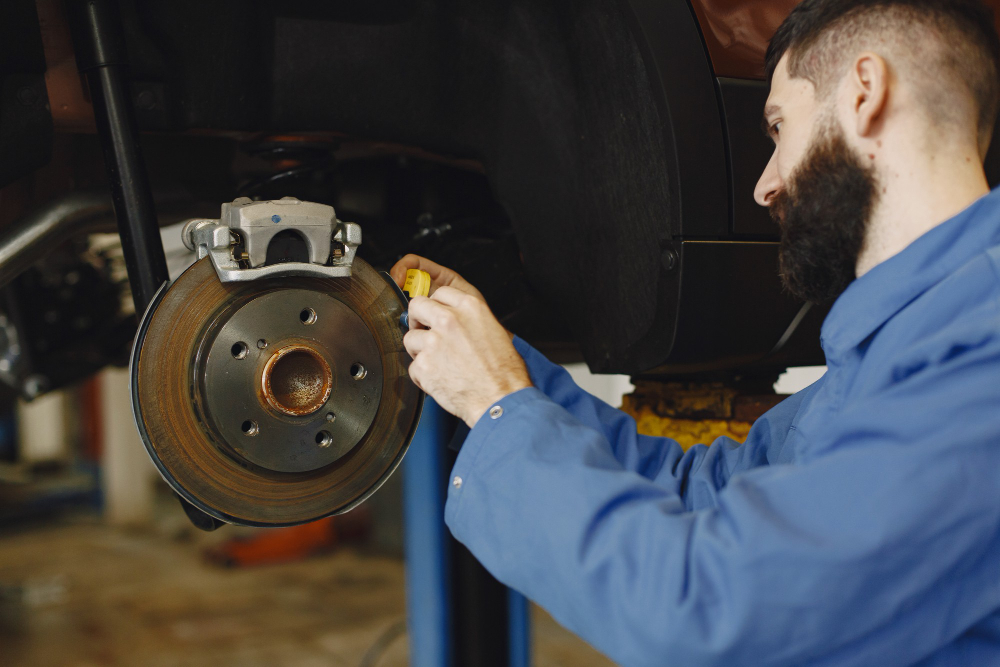Why Is My Clutch Slipping and How Do I Fix It?

Strong 8k brings an ultra-HD IPTV experience to your living room and your pocket.
A slipping clutch is a common issue in manual transmission vehicles that affects performance and drivability. If your clutch is not engaging properly, you may notice a loss of power, difficulty in shifting gears, or unusual burning smells. Understanding why a clutch slips and how to address the issue can help prevent further damage and costly repairs.
What Is Clutch Slipping?
A slipping clutch occurs when the clutch disc fails to maintain firm contact with the flywheel, causing incomplete power transmission from the engine to the wheels. As a result, acceleration and overall vehicle efficiency are affected. If left unresolved, a slipping clutch can worsen, leading to complete clutch failure.
Common Causes of a Slipping Clutch
Several factors contribute to clutch slipping, including:
1. Worn-Out Clutch Disc
The clutch disc is lined with friction material that grips the flywheel. Over time, this material wears down, reducing its ability to function effectively.
2. Oil or Fluid Contamination
Leaks from the engine or transmission can cause oil or hydraulic fluid to seep onto the clutch, leading to slippage.
3. Weak or Damaged Pressure Plate
The pressure plate holds the clutch disc against the flywheel. If it becomes weak or damaged, it may not provide enough force to keep the clutch engaged.
4. Overheating
Frequent stop-and-go traffic, aggressive driving, or towing heavy loads can cause excessive heat buildup, which weakens clutch components.
5. Incorrect Clutch Pedal Adjustment
An improperly adjusted clutch pedal can prevent the clutch from fully engaging, leading to slippage.
6. Poor Driving Habits
Resting your foot on the clutch pedal while driving (riding the clutch) or sudden gear changes can accelerate clutch wear and lead to slipping.
Symptoms of a Slipping Clutch
A slipping clutch often presents the following warning signs:
Loss of Acceleration: The engine revs increase, but the vehicle does not gain speed proportionally.
Burning Smell: A distinct burnt odor caused by excessive friction.
Difficulty Shifting Gears: Hard or noisy gear shifts, especially into higher gears.
High Clutch Pedal Engagement: The clutch engages higher than usual when releasing the pedal.
Shuddering or Vibrations: Irregular clutch engagement causing noticeable vibrations.
How to Fix a Slipping Clutch
The right clutch slipping fix depends on the severity of the issue. Here are some common solutions:
1. Adjust the Clutch Pedal
If the clutch pedal is incorrectly positioned, adjusting the clutch cable or hydraulic system can help restore proper function.
2. Replace the Clutch Disc
A worn clutch disc is one of the most common reasons for slippage. Replacing it can restore proper engagement.
3. Inspect for Fluid Leaks
If fluid contamination is present, fixing leaks and cleaning the affected components can help resolve the problem.
4. Replace the Pressure Plate
A weak or damaged pressure plate may need replacement to maintain proper clutch engagement.
5. Prevent Overheating
Avoid excessive clutch use, aggressive driving, or heavy towing to prevent overheating and premature wear.
Slipping Clutch Repair Cost
The slipping clutch repair cost varies depending on the vehicle type and severity of the issue:
Clutch Adjustment: $50 - $150
Clutch Disc Replacement: $500 - $1,500
Complete Clutch Kit Replacement: $800 - $2,500 (includes clutch disc, pressure plate, and release bearing)
Automatic Transmission Clutch Repairs: $1,500 - $3,000
It is recommended to consult a professional to get an accurate estimate for your vehicle.
Automatic Clutch Slipping Symptoms
In vehicles with automatic transmissions, automatic clutch slipping can cause issues such as:
* High Engine RPMs Without Acceleration
* Transmission Overheating
* Shuddering or Jerking While Driving
If you experience these symptoms, a transmission specialist at a clutch repairs Perth service center should inspect the vehicle to determine whether clutch components need repair or replacement.
How to Prevent Clutch Slipping
While some wear and tear is unavoidable, proper maintenance and driving habits can extend the lifespan of your clutch:
Avoid Riding the Clutch: Keep your foot off the clutch pedal when not shifting gears.
Use the Handbrake on Inclines: Prevent unnecessary clutch strain by using the handbrake when starting on a hill.
Shift Smoothly: Avoid sudden gear changes and excessive revving.
Schedule Regular Maintenance: Routine inspections at an auto care shop can help detect issues before they become serious problems.
Conclusion
A clutch slipping issue can reduce vehicle performance and lead to costly repairs if ignored. Recognizing early symptoms and addressing the root cause promptly can help prevent further damage. Whether it’s a manual or automatic clutch slipping, regular maintenance and mindful driving can extend the lifespan of your clutch and keep your vehicle running smoothly.
Note: IndiBlogHub features both user-submitted and editorial content. We do not verify third-party contributions. Read our Disclaimer and Privacy Policyfor details.


